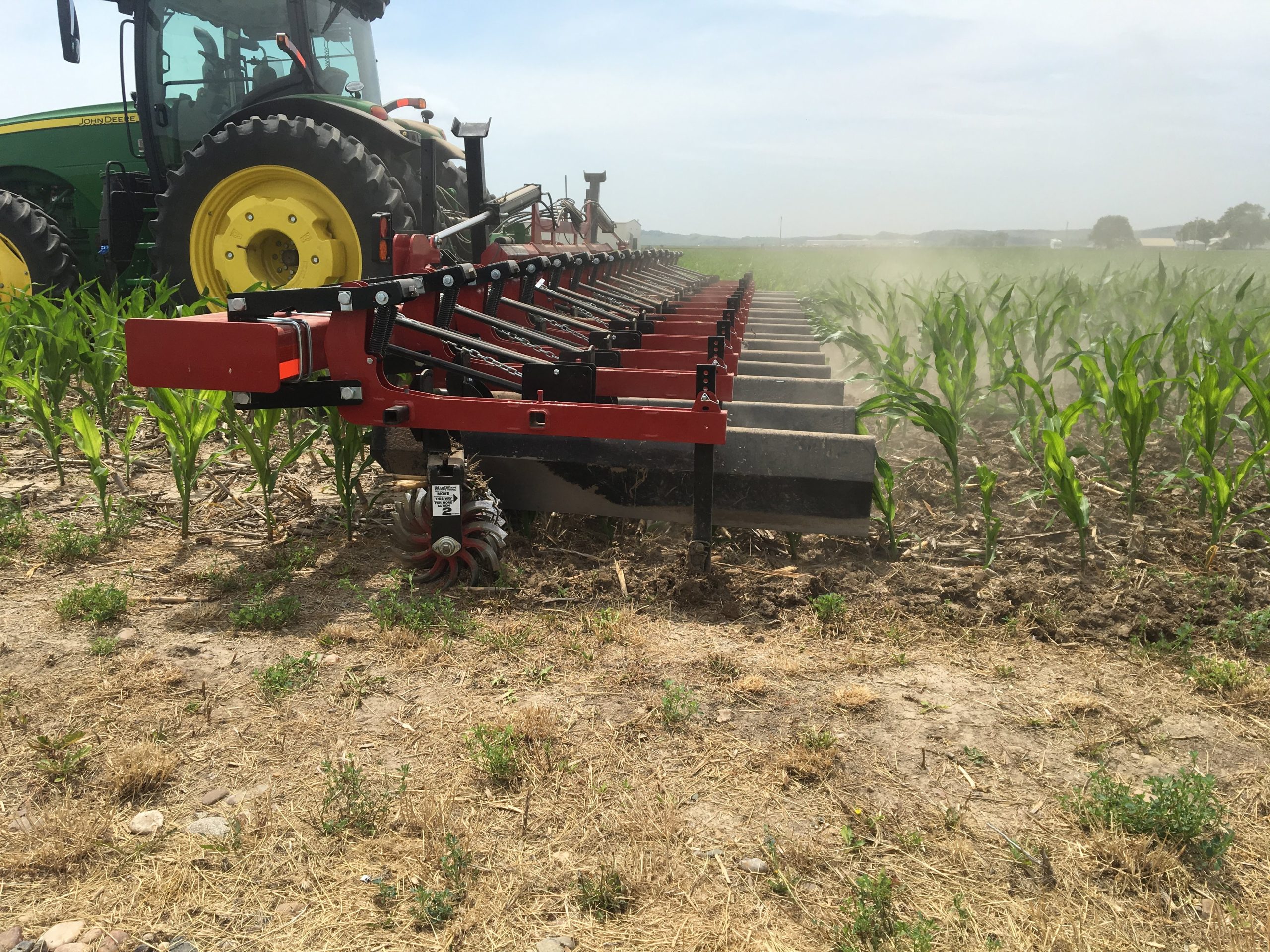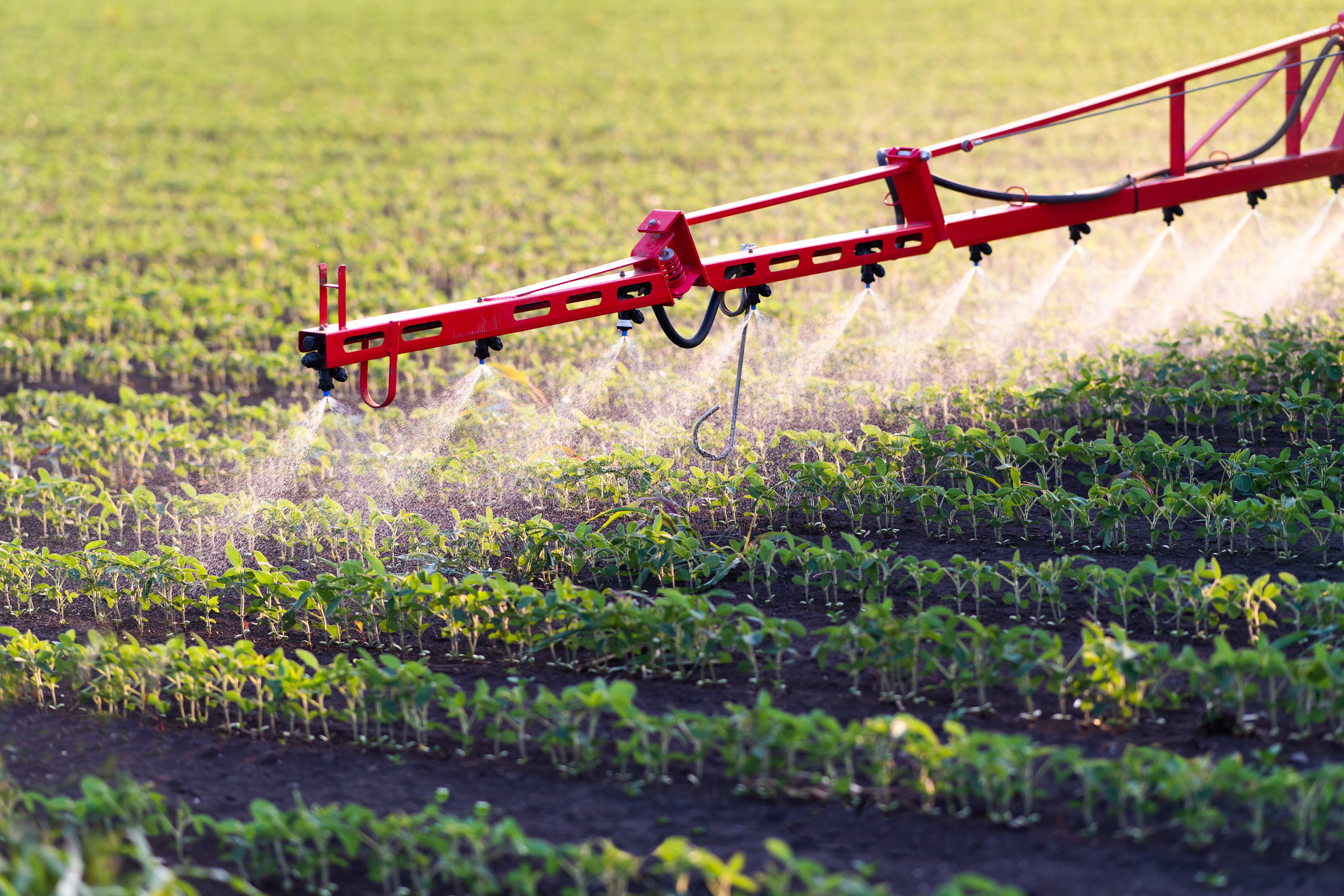Farmers in the US have been using herbicides to control weeds for generations, with their availability and use becoming widespread in the 1960s.
But what was once hailed as a miracle solution to invasive weeds is now being flagged as a significant threat to food security as new strains of herbicide-resistant weeds spread across the country, squeezing out crops.
But how does herbicide resistance develop? How widespread is the problem – and what can farmers do to overcome it? Let’s explore the situation in more detail.

How does herbicide resistance occur?
Herbicide resistance is the inherited ability of a plant to survive and reproduce following a dose of herbicide that would normally be lethal to that plant. It’s linked to the repetitive use of the same herbicides. In every weed population, there will be a very small number of individual plants that look the same as all their counterparts, but have very slight genetic differences that enable them to survive herbicide application and go on to self-seed. At first, it might just look like a few plants or a small patch got ‘missed’. But over time, when the same herbicide is used every year, the offspring of these plants eventually become the dominant weed species, with the majority of plants now able to withstand the herbicide.
How bad is herbicide resistance in the US?
The top four most popular agricultural herbicides used in the US are glyphosate (Roundup), Atrazine, 2,4-D and Dicamba, with glyphosate being the longest in use and also the most widely used, while current generation Dicamba is the newest, having been approved for use over GMO dicamba-resistant crops in 2016.
Research from the International Survey of Herbicide Resistant Weeds, which collects data from more than 80 countries worldwide, shows that glyphosate is losing effectiveness against 361 weed species, 180 of them prevalent in the US. Some 21 species already show resistance to Dicamba.
It’s estimated that some 60 million acres of US farmland are already infested with herbicide-resistant weed species – nearly half of all farms – and this number is growing every year. “We’re in for big problems over the next 10 years for sure,” Ian Heap, director of the International Survey of Herbicide Resistant Weeds, told news agency Reuters in 2023. “We are in for a real shake-up.”

Which herbicide-resistant weeds present the biggest threat?
Problematic weed species include pigweed and waterhemp species (amaranths) as well as kochia, ragweed, horsetail, foxtail and ryegrass.
Herbicide-resistant pigweed and kochia are arguably some of the most troublesome species, particularly pigweed, which can re-root itself after being pulled up and can grow up to three inches per day. Palmer amaranth is known to be resistant to six different types of herbicide and can suppress soybean yields by nearly 80 percent – corn yields by 90 percent.
Kochia exhibits rapid growth in late summer, reaching up to 6ft tall and producing up to 30,000 seeds per plant. It can reduce crop yields by up to 70% according to Take Action, a farmer resource program of the United Soybean Board.

What can farmers do to tackle herbicide resistance?
Experts in agriculture tell us that herbicide resistance isn’t going away, with some predicting that problematic species could become completely resistant within a decade. Many farmers live in hope that a new ‘miracle’ herbicide will come along in the same way that glyphosate did in the 1960s.
But it’s clear that weeds are evolving faster than man can produce new weedkillers. Roundup’s manufacturer spent 10 years bringing a new generation of genetically modified seeds, bred to resist both glyphosate and dicamba, to the marketplace. It took the weeds just 5 years to catch up – by 2020, scientists had confirmed the existence of dicamba-resistant pigweed.
Advice from the experts is that integrated weed management – a combination of chemical and mechanical methods – is key to slowing the proliferation of herbicide-resistant weeds because even so-called ‘zombie weeds’ can’t survive being mechanically chopped down, which means they can’t pass their herbicide-resistant genes on to future generations.
Six tips for integrated weed management:
- Rotate herbicides
Avoid making more than two consecutive applications of the same herbicide (or different brands with the same mode of action) in the same field. - Use tank mixtures
Certain herbicides can be mixed together in the same tank and applied simultaneously for greater weed-killing effect. You should aim to use herbicides with differing effective modes of action (for example, some herbicides are root growth inhibitors while others stop the plant from photosynthesizing) and ALWAYS follow the manufacturer’s directions for safe usage. - Rotate crops
Diversity is key to the prevention of herbicide resistant weeds – and weeds in general. When you switch up the crop, you switch up the environment – the amount of light and moisture, the types of pests, the soil nutrients – which means the weeds are constantly having to adapt. This prevents one weed species from becoming dominant. - Scout your fields
Be vigilant for weed escapes that can mark the start of a resistance problem on your farm. What looks like a ‘missed patch’ is often a canary in the coal mine. Take steps to identify and eliminate any significant weed stands before they become a larger problem – which can happen from one year to the next. - Reduce residual times
Use herbicides with short soil residual times—herbicides with long soil residual times generally favor herbicide resistance. This is because long residual times keep susceptible plant species suppressed for longer – so resistant variants have even less competition to keep them in check. - Practice good biosecurity
Clean your equipment before moving to a different field to prevent the spread of resistant biotypes and save work in fields with suspected herbicide resistance for last.
Premium weed management tools
At Wearparts, we supply an extensive range of premium tillage tools suitable for effective weed management that leaves young crops undisturbed, including cultivator and Fallowmaster-style sweeps, trash management tools and more – check out this blog on mechanical weed management, or contact us for further information.


